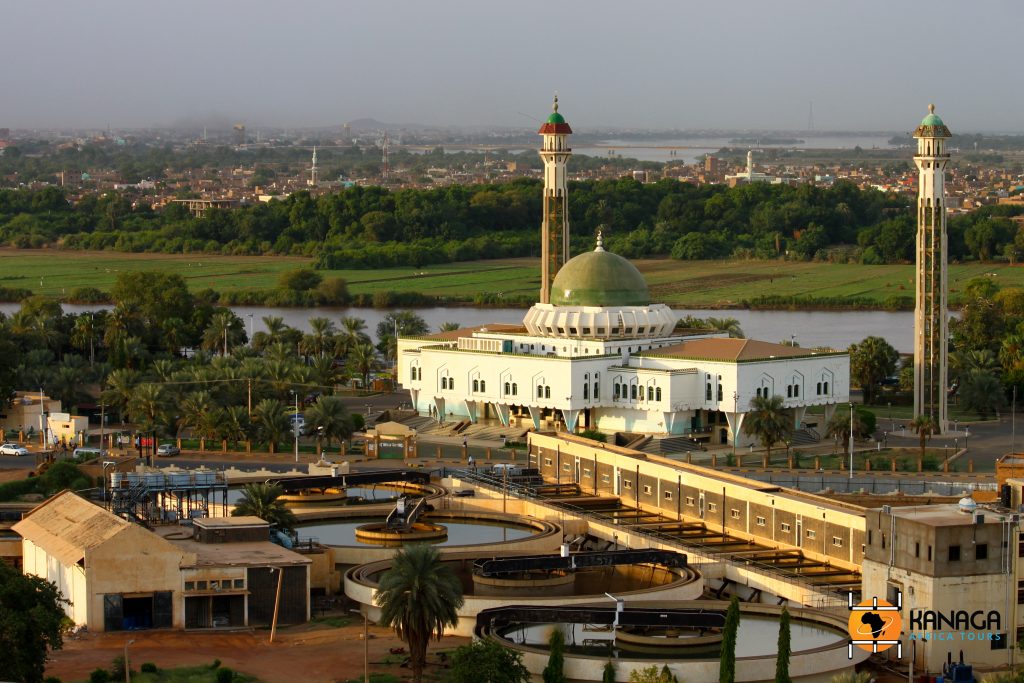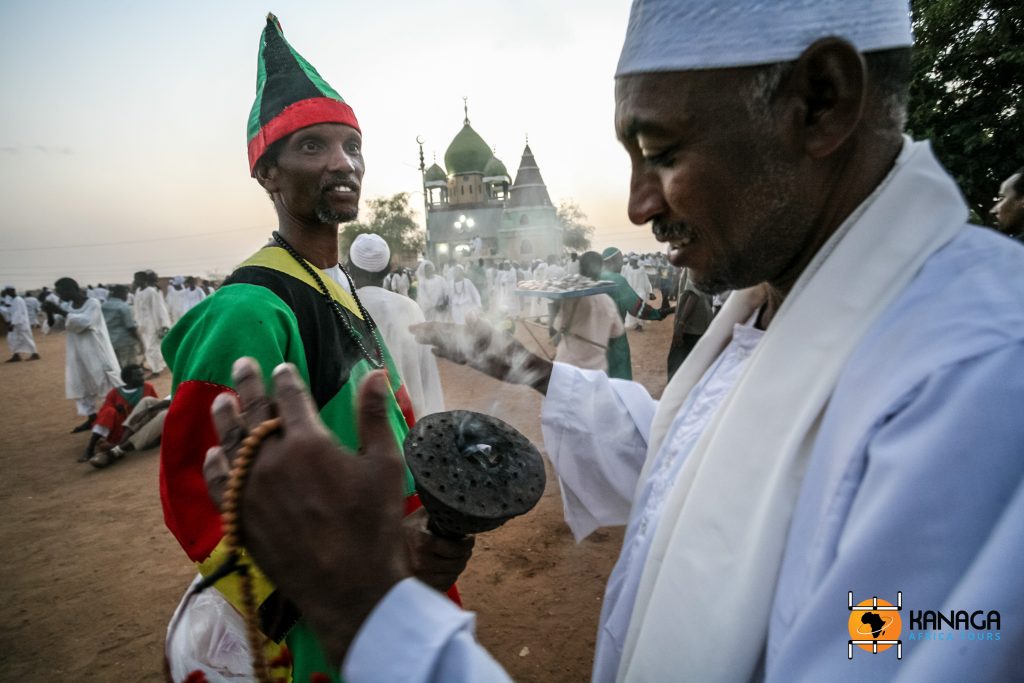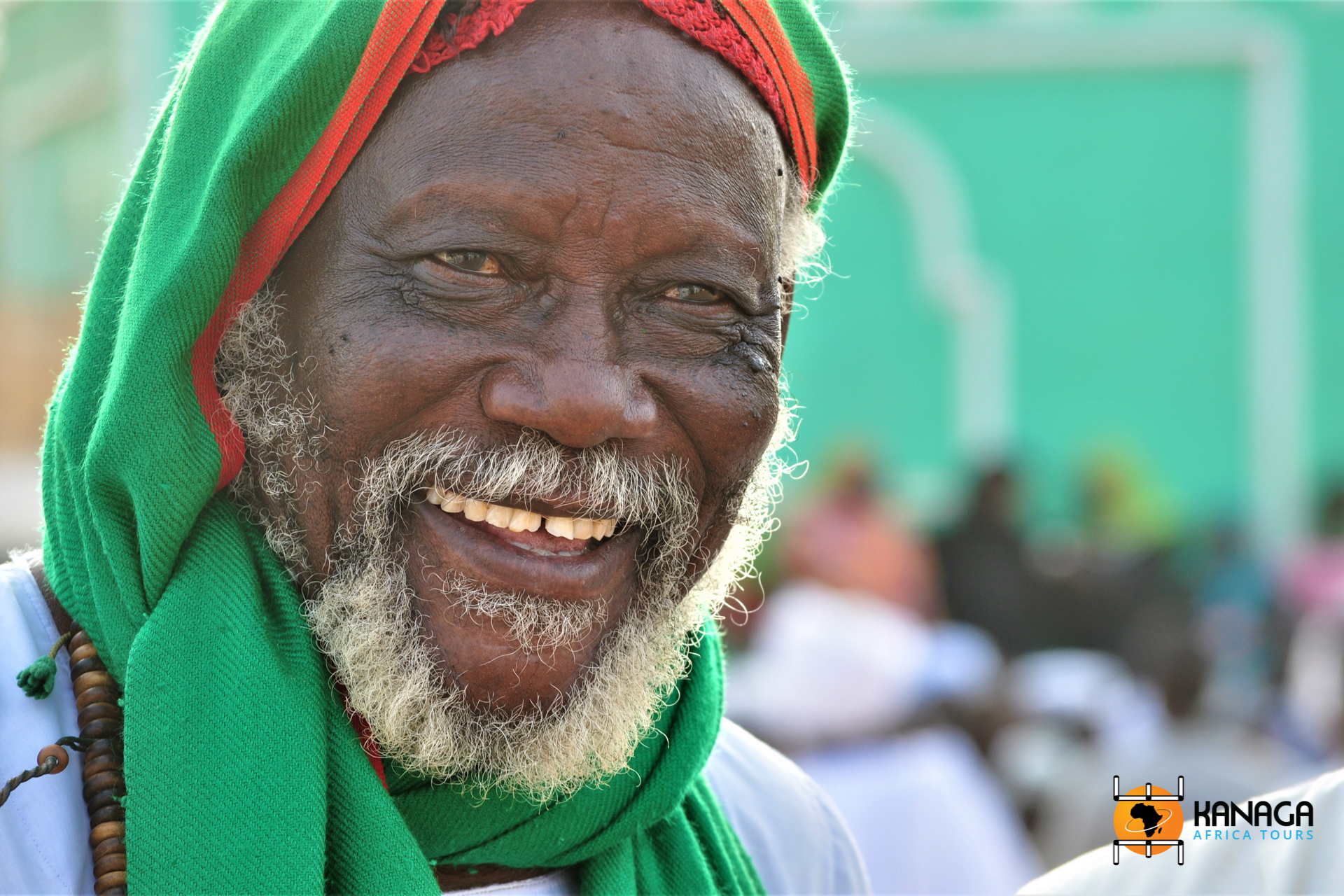© L.F. Paoluzzi
The geographical heart of the city of Khartoum is Tuti Island, lying at the exact point of confluence of the Blue Nile and the White Nile. The Blue Nile, which provides the largest supply of water and silt, originates from Lake Tana in Ethiopia, while the White Nile, which is longer, has its source in Uganda at Lake Victoria. Although the city itself does not offer much in the way of attractions, apart from a lively cross-section of Sudanese urban life, you can’t miss the chance to admire this extraordinary natural area, the habitat of Nilotic crocodiles and colourful birds, right in the centre of town.
Not far from the confluence, overlooking the banks of the river, stands the Khartoum Archaeological Museum, which houses some of the most precious and significant finds from the ancient Kushite, Napatite and Meroitic, as well as early Christian, civilisations that followed one another along the Nile Valley in Nubian lands. The museum structure is by no means up to the level of the treasures it contains, but when faced with the wonder of thousands of artefacts, jewellery, pottery, sculptures, cyclopean statues and entire temples or frescoed walls that have been reassembled on site, one does not pay much attention to the building that houses them. It is unthinkable to visit the capital without planning a visit to this immense archaeological heritage!
To the north-west of Khartoum, on the other hand, lies the much more populous Omdurman, a historic city in its own right, the ancient capital of the 19th century and a Mahdist centre, but today, to all intents and purposes, a continuity of the modern capital. It is in its historic quarters that the nerve centre of Sudanese trade and traditions is concentrated, between the colourful and chaotic central market and the Hamed al-Nil mausoleum.
Every Friday, a confraternity dedicated to Sufism gathers around this ancient mausoleum, in a sort of weekly pilgrimage, giving life at sunset to the Sufi dance of Dihkr, a ritual ceremony rooted in the Middle Eastern dances of the whirling dervishes.
In a procession, the faithful flock to the Sheikh Hamed al-Nil tomb, who lived in the 19th century and is a spiritual leader revered as a saint by the local Muslim communities. The members of the brotherhood, some of whom are dressed in coloured fabrics, green and red, typical of Mahdism, or entirely in white, a symbol of purity, sing and dance as they rotate around themselves, repeating the chanted verses of the Koranic faith to the sound of traditional drums and lutes, in a sort of collective hypnosis or trance. A deeply participatory show, not to be missed, linked to spiritual and meditative practices rooted in pre-Islamic rites, in the shamanism of animist healers, in a contamination between Arab-Muslim culture and sub-Saharan ancestral traditions, which were imported over the centuries from the slavery of the peoples of the south.
As an ‘animist’ counterpart to the Muslim Dihkr ceremony, traditional wrestling matches of the Nuba people are held every Friday afternoon in an arena north of Khartoum. An equally heartfelt and participatory event, which shows the other face of the country, the purely sub-Saharan one. If in the Nuba Mountains the young initiates continue to practice it as a test of strength in animist rituals and initiations, completely naked, in the middle of the Muslim capital they have instead been forced to dress. These are real wrestling matches, very heartfelt and with great participation and incitement on the part of the public, and are therefore controlled by the forces of law and order to prevent them from degenerating when the fans’ tempers get too high.







